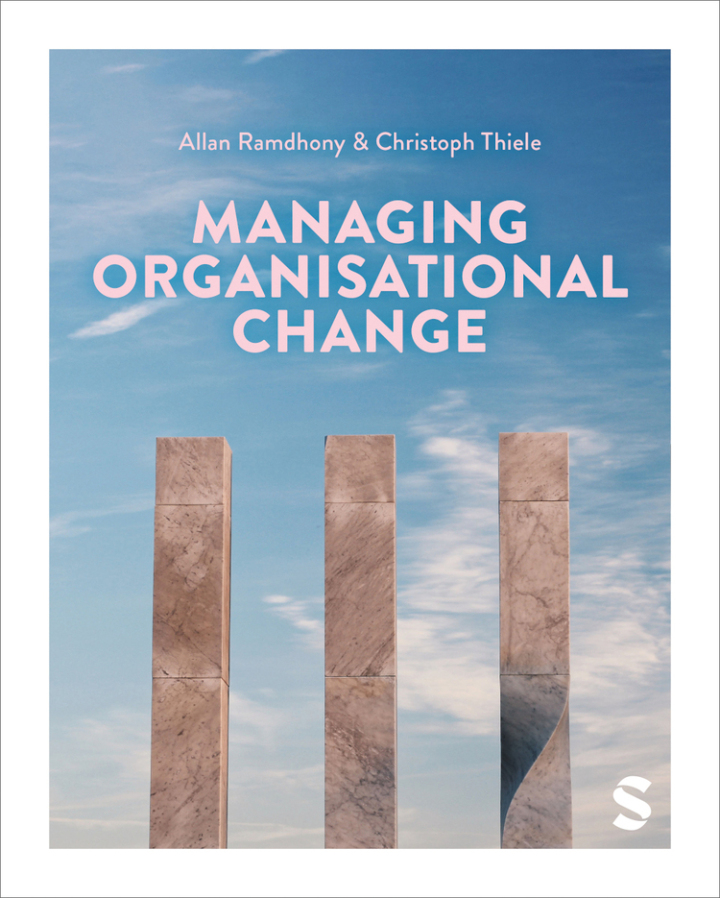
Managing Organisational Change 1st Edition
PUBLISHER: Sage
Trường ĐH, Nhóm, Thư Viện: Gọi 0915920514 để báo giá eBook hosting trên Vital Source hoặc mua Sách In
Quản lý thay đổi tổ chứcKhám phá góc nhìn mới mẻ về quản lý sự thay đổi của tổ chức trong cuốn sách giáo khoa dễ tiếp cận này, cuốn sách liên kết lý thuyết với thực tiễn và áp dụng các khái niệm phức tạp vào cuộc sống. Được cấu trúc xoay quanh ba trụ cột của quản lý thay đổi thành công, cuốn sách xem xét sự thay đổi trong bối cảnh nền kinh tế toàn cầu và xem xét một loạt các ví dụ quốc tế. Các tính năng chính bao gồm: Nghiên cứu điển hình khám phá ý nghĩa thực tế của các vấn đề thay đổi thông qua các công ty như Tập đoàn Alibaba, NHS England, GSK, Tata Motors, Nike, Hewlett-Packard và Krakatau Steel của Indonesia. Các bài tập thực hành và phản ánh nhằm khuyến khích thử nghiệm các công cụ và kỹ thuật cũng như để hiểu sâu hơn.
List of FiguresList of TablesList of Case StudiesOnline ResourcesAcknowledgements1 Introduction1.1 Conceptual framework1.2 Aim and objectives1.3 Book structure1.4 Pedagogical approach1.5 How to use this book1.6 Overarching learning outcomes1.7 ReferencesPART I A SYSTEMIC APPROACH TO CHANGE2 The Nature of Change and Role of Change ManagementLearning outcomes2.1 Introduction2.2 Philosophical underpinnings2.3 Typology of organisational change2.4 The theory of punctuated equilibrium2.5 Causes of organisational change2.6 The role of change management2.7 Exploring the links between OD, PM and CM2.8 Conceptual nugget: Adopting a systemic approach to change management2.9 Key learning points2.10 Independent learning2.11 References3 Strategic ChangeLearning outcomes3.1 Introduction3.2 Meaning of strategic change3.3 Change agency: Determinism v. Voluntarism3.4 Approaches to strategic change3.5 Diagnostic tools to facilitate strategic change3.6 Conceptual nugget: Leading strategic change in a VUCA business world3.7 Key learning points3.8 Independent learning3.9 References4 Theories and Models of Change ManagementLearning outcomes4.1 Introduction4.2 Key change theories4.3 Characteristics of a good change model4.4 Critical review of popular organisational change models4.5 Conceptual nugget: The superior value of systemic models4.6 Key learning points4.7 Independent learning4.8 ReferencesPART II A DIALOGIC APPROACH TO CHANGE5 Reactions to ChangeLearning outcomes5.1 Introduction5.2 The psycho-social factors underlying human reactions to change5.3 Types of reactions to change5.4 The coping cycle5.5 Resistance to change5.6 Conceptual nugget: Managing resistance to change as dialogic practice5.7 Key learning points5.8 Independent learning5.9 References6 Culture ChangeLearning outcomes6.1 Introduction6.2 The complex and multidimensional concept of culture6.3 Layers of organisational culture6.4 The cultural web6.5 Organisational subcultures6.6 Strategies for managing cultural change6.7 Managing cultural diversity in an international context6.8 Conceptual nugget: A dialogic model for managing culture change6.9 Key learning points6.10 Independent learning6.11 References7 Leading ChangeLearning outcomes7.1 Introduction7.2 The meaning of leadership7.3 Leadership through the ages: Implications for organisational change leadership7.4 Leaders v. managers7.5 Key leadership theories7.6 Contemporary approaches to organisational change leadership7.7 Conceptual nugget: Dialogic leadership7.8 Key learning points7.9 Independent learning7.10 References8 Communicating ChangeLearning outcomes8.1 Introduction8.2 Human communication and organisational change8.3 Shannon and Weaver’s model of communication8.4 Why do organisations fare badly in communicating change?8.5 Clampitt et al.’s typology of communication strategies8.6 Choosing the right medium for communicating change8.7 Organisational silence8.8 Conceptual nugget: A dialogic model for communicating change8.9 Key learning points8.10 Independent learning8.11 ReferencesPART III A PROCESSUAL APPROACH TO CHANGE9 Implementing ChangeLearning outcomes9.1 Introduction9.2 Approaches to change implementation9.3 Methods of change implementation9.4 Combining Lean with Six Sigma: LSS9.5 Conceptual Nugget: A filtering device for selecting change implementation methods9.6 Key learning points9.7 Independent learning9.8 References10 Evaluating ChangeLearning outcomes10.1 Introduction10.2 Evaluation in the context of organisational change10.3 Operationalising a process model of change evaluation10.4 The Balanced Scorecard10.5 Change evaluation in SMEs10.6 Conceptual nugget: A critical approach to change evaluation10.7 Key learning points10.8 Independent learning10.9 References11 Sustaining ChangeLearning outcomes11.1 Introduction11.2 On change sustainability and sustaining change11.3 The impact of the public discourse of sustainability on business organisations11.4 Embedding sustainability in the value chain11.5 Strategies for sustaining change11.6 Conceptual nugget: A seven-step practical framework for sustaining change11.7 Key learning points11.8 Independent learning11.9 References12 Conclusions12.1 Introduction12.2 Achievement of aim and objectives12.3 Summary review of conceptual nuggets12.4 Concluding remarksGlossaryIndex















